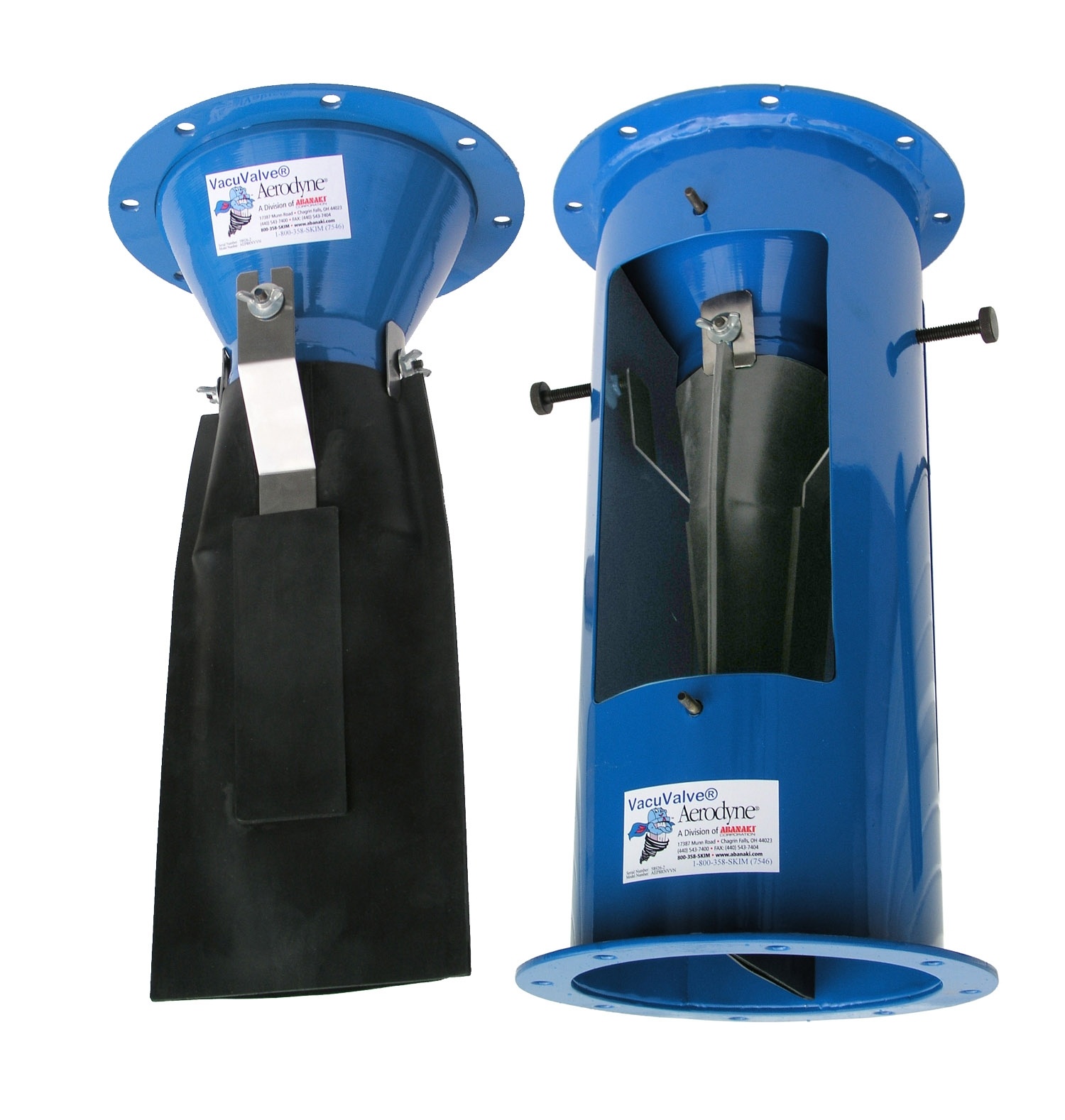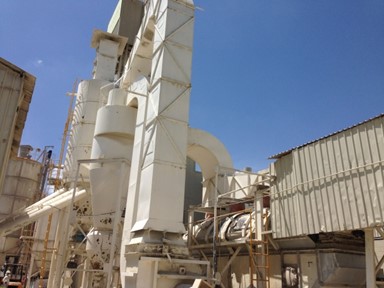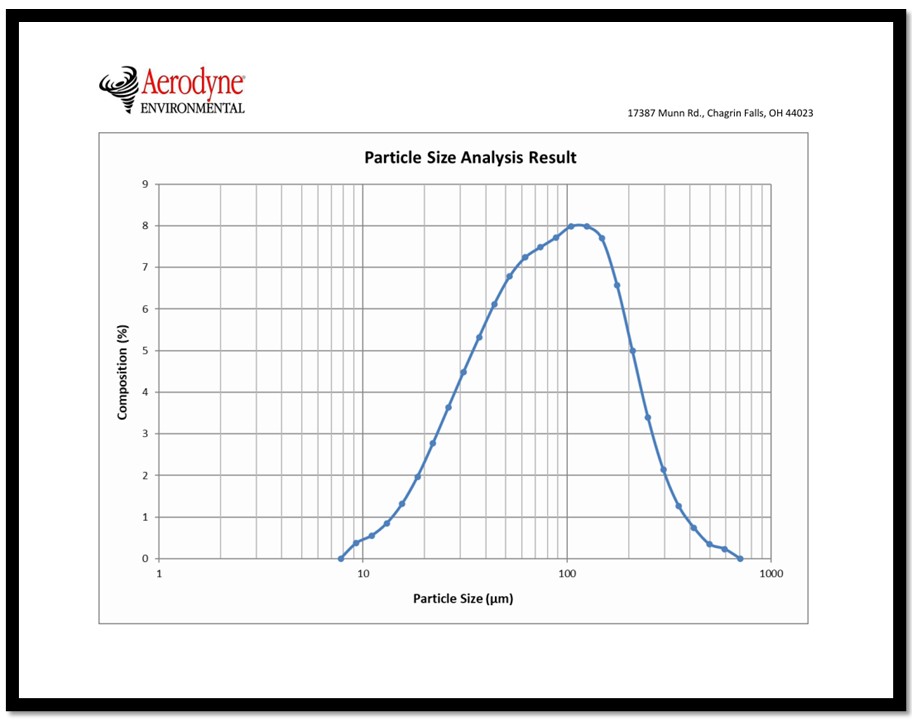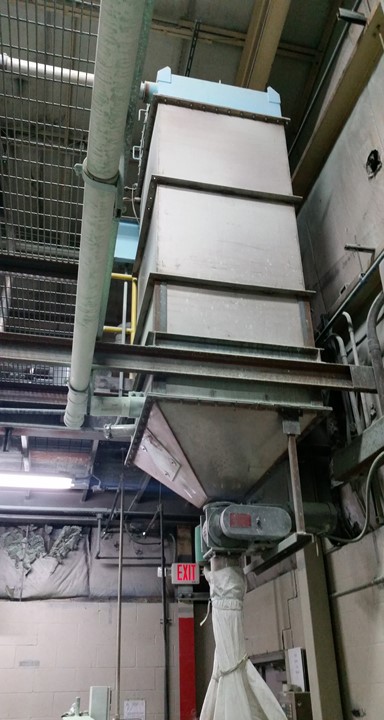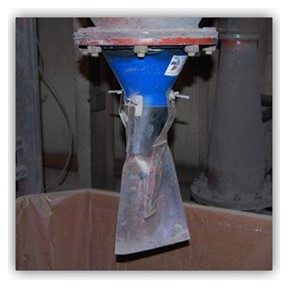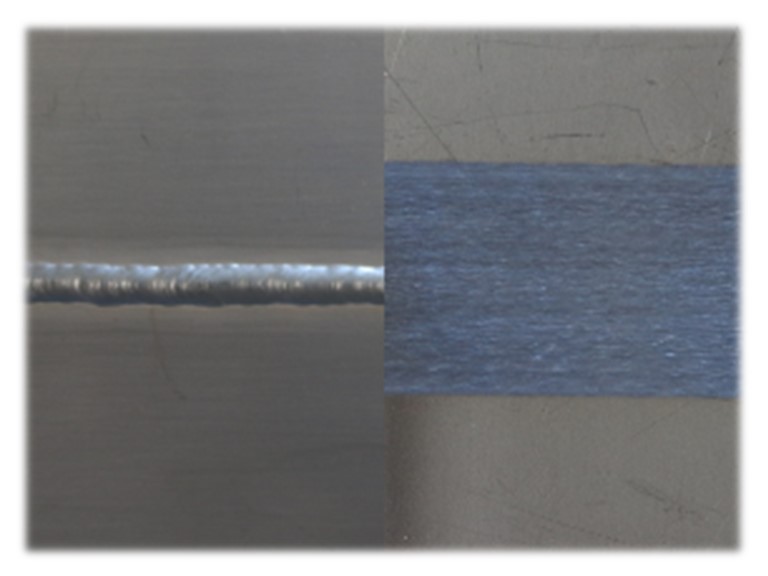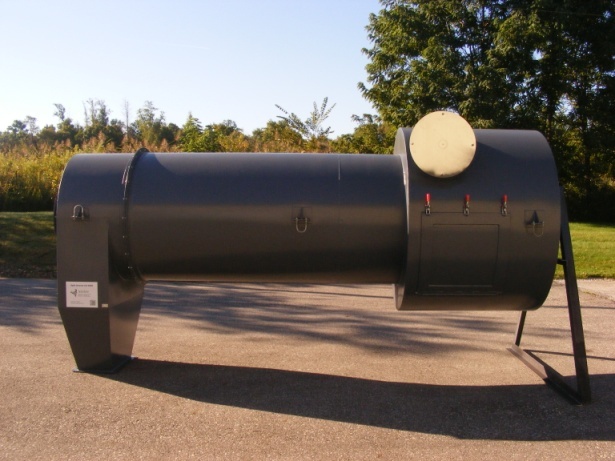Dust collection filters such as the bags in baghouses, cartridges in cartridge collectors, and HEPA filters all filter out dust particles by collecting them in between their fibers. Dust builds up on the bags and cartridges to form a filter cake over the filter further restricting the ability of dust particles and airflow to pass through the filter. This restricting of airflow causes a pressure drop (resistance) which is directly related to the amount of dust built up on the filters. As the pressure drop increases, the airflow through the collector will decrease. Most baghouses and cartridge collectors have cleaning cycles which remove some of the dust from the filters keeping the pressure drop low.
The cleaning process on the filters usually consists of blowing higher pressure air through the filters, thereby causing it to expand slightly. This knocks off some of the top layer(s) of the filter cake which lowers the pressure drop through the filters. Other units have the filters connected to a mechanical shaking system. The airflow through the filter will be stopped during the cleaning process. The mechanical shaker system will gently shake the filters dislodging the dust to fall into the hopper.
Even with these cleaning functions, the filters will eventually plug up and significantly decrease the amount of air they allow to pass. This will starve the pickup points of airflow, allowing dust to escape and never enter the collection system. Depending on the application, this can happen within months or years of putting in new filters. The process of replacing the filters usually requires the system to be turned off. Cartridge collectors are usually easier to replace than bag, but either way the time and labor it takes to change are significant.
Ways to Extend Filter Life
It is therefore very advantageous to extend the time between filter replacements. The following are a few ways to extend filter life.
- Install a pre-filter before the dust collector. The greater the concentration of dust getting to the filter, the faster the filter will plug up or fail. So if you can lower the dust concentration, you will extend the life of the filters. Pre-filters include cyclones and dropout boxes. Pre-filters remove most of the larger particles, leaving only the smallest to be handled by the filters.
- Install pulse-on-demand controllers. A pulse-on-demand controller monitors the pressure drop across the filters. And when the pressure drop gets too high, the unit will activate the cleaning process until the pressure drop falls below a shutoff point. This extends life by preventing unnecessary cleaning of filters which can cause holes to develop in the filters. It also can save money on compressed air and keep the airflow within desired range.
- Install different filters. Not all filters are the same. Some filters are designed to minimize issues with wet dust. Others have higher temperature ratings so they won’t degrade. If you are replacing filters too often, contact your filter supplier or system manufacturer to see if there are other filters that are more suitable. These special filters are more expensive, so it might be prudent to look at adding a pre-filter and pulse-on-demand controller to extend life even further at the same time.
- If you are plugging up the filters with hygroscopic dust, check the collector housing for leaks that might allow humidity into it. Also, check the compressed air supply to make sure humidity isn’t being added to the system.
- Install insulation on the dust collector if you have high humidity. Insulation will help prevent water vapor from condensing at night or during winter, thereby preventing water droplets from damaging the filters or causing dust to plug up in the filters.
- Install a spark arrester before the dust collector. Depending on the process being vented, sparks can be pulled into the dust collector which, thereby cause the filters to catch on fire. Installing a spark arrester prevents this. Often times a pre-filter (cyclone or dropout box) provide the same protection.
If you are replacing filters too often then think about making some of the above changes to your system next time you are due to replace filters. That way you can extend your filter life and operate for longer periods of time without maintenance.
To learn more about which dust collector, please contact our experts at 440-543-7400 or visit our website: www.dustcollectorhq.com.
To improve efficiency and safety, there is no substitute for an on-site inspection by an experienced expert. Click below to start with a free 20-minute phone consultation by clicking the button.




